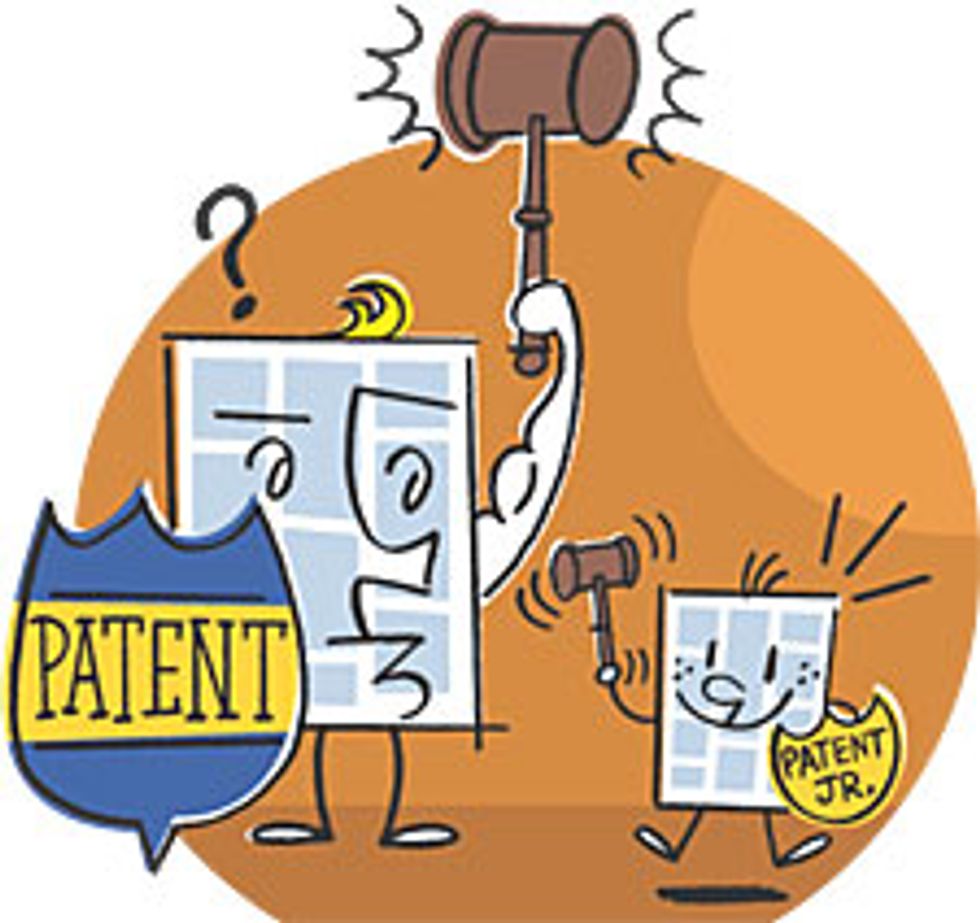Your patent application has been denied. What now? In the United States you can appeal or accept defeat. But in other countries you may be eligible for a lesser form of patent protection, known as a petty patent or a utility model. This instrument provides some patent-like protection, but the scope and duration of that protection is significantly less than that for inventions that qualify for a standard patent.
Historically, petty patents have had few takers, being viewed as the patent-seeker's booby prize. That may soon change, however, with Australia leading the way.
Petty patents are offered in several European nations--no pan-European version is available, in contrast to standard patents--as well as in Japan, China, South Korea, Taiwan, and other countries. Their advantages stem from a less demanding threshold of inventiveness: even a slight difference from prior work is generally enough to warrant a new petty patent. As a result, these relatively inexpensive patents tend to be granted quickly--in weeks or months--compared with years for a typical standard patent, which undergoes extensive examination against prior work before being granted.
Petty patents are cheap and easy, but you get what you pay for. Most last 4 to 10 years, depending on the country, compared with up to 20 years for a standard patent. Moreover, without the benefit of an examination, petty patents receive a chillier reception in court. Many countries also limit the subject matter that may be covered; a German petty patent, for example, cannot cover methods or processes.
In a move to offer inventors more support, Australia revamped the petty patent in 2001. An Australian "innovation patent," as it's called, lasts for eight years and is not as restricted in terms of subject matter; anything that may be covered by a standard patent (with the exception of plants and animals) is likewise fair game under the innovation system. Innovation patents are also limited to five patent claims defining the invention; most standard patents, in contrast, include as many claims as possible to stake out as much ground as they can.
Getting an innovation patent is still as easy as getting a petty patent--just showing a small but meaningful change from an earlier patent will suffice. To qualify for a standard patent, on the other hand, a new invention may be measured against the combined teaching of multiple prior references and must differ in ways that would not be obvious to engineers or scientists in the relevant field. As a result, an innovation patent can be used to protect lower levels of innovation that would not pass muster under the standard system.
Examination on whether or not an invention meets even the low standard of an innovation patent is necessary to make an innovation patent enforceable. But examination can be deferred indefinitely until the need, such as an infringement case, arises. Recent experience suggests that the cursory examination of an innovation patent can be completed in a matter of months, compared with two to four years for standard patents.
Yet, despite their rapid progress through examination and the lower inventiveness threshold, once they are examined and certified by the Australian Patent Office, innovation patents should be no less effective in Australian courts than standard patents.
By creating a viable system of secondary patents, Australia has given inventors a variety of new strategic options. If an applicant for a standard patent encounters resistance from the patent office, he can opt for an innovation patent. In fact, standard and innovation patents for the same invention can coexist--provided the claims differ in scope. So an applicant may wind up with a narrow standard patent as well as a broader innovation patent or vice versa.
Moreover, suppose an applicant learns of infringement while her standard patent application remains under consideration. By filing for an innovation patent, she can relatively quickly obtain legally enforceable protection. A successful applicant receives rights akin to those from a standard patent together with all the standard remedies, including, in principle, injunctions that put a halt to infringing activity. And because innovation patents don't require an inventive step, they will be harder to invalidate than standard patents.
Still, the innovation patent system has not been without its critics. Appalled at what he perceived as a dumbing down of invention standards, one waggish patent lawyer filed for an innovation patent on a "circular transportation facilitation device"--that is, the wheel. Obviously, his application would not survive even the limited examination for an innovation patent, but the gesture raises a legitimate concern.
Will every Australian patent applicant forgo standard patents for the lower cost and patentability requirements of the innovation system? With many arguing that patent systems worldwide have already become too permissive with the subject matter and breadth of claims allowed, will even more relaxed invention standards harm rather than promote innovation?
These concerns, while valid, probably misconstrue the import and place of innovation patents. Innovation patents answer the need for quick protection in rapidly evolving industries or for ready-to-market products with short life cycles. Less potent than standard patents, they nonetheless provide more than just a meaningful consolation prize.
About the Authors
Steven J. Frank (A) specializes in patent and licensing matters as a partner in the Boston law firm of Testa, Hurwitz and Thibeault (https://www.tht.com). Wayne A. Slater is a partner in the Brisbane, Australia, office of Pizzeys Patent and Trademark Attorneys.
